As you explore the colorful markets and busy streets of Morocco, you’ll find many street foods that are not only delicious but also rich in cultural history. Start with Tangia, which is more than just food—it’s a whole experience! It’s slowly cooked in the warm ashes of a hammam, making it very special. Then, try the Harira Soup, a favorite during Ramadan. This soup is filled with lentils, chickpeas, and tasty spices, perfect for warming you up. Also, don’t miss out on Maakouda. These are crispy potato pancakes that make a great snack while you’re on the move.
Each of these dishes tells a story about the Moroccan way of life. They show how traditional recipes have become popular today. There’s so much more to taste and learn here, so why stop? Keep exploring the flavors of Morocco!
Key Takeaways
When you’re wandering the vibrant streets, the array of street foods in Morocco is a journey of flavors just waiting to be explored. Here are five must-try dishes that will give you a true taste of Moroccan culture:
- Tangia: This is not just food; it’s a piece of Moroccan tradition. Tangia is a lamb dish that’s been cooked very slowly, absorbing all the rich spices and flavors. It’s tender and delicious, making it a perfect introduction to the traditional cooking of Morocco.
- Harira Soup: Especially popular during Ramadan, this soup is a comforting blend of tomatoes, lentils, and a mix of spices. It’s hearty and filling, ideal for replenishing energy after a day of fasting or just exploring the city.
- Maakouda: These are small, crispy potato pancakes that can be eaten alone or stuffed into sandwiches. They are a delightful snack that offers a crunchy texture and a burst of flavor with every bite.
- Moroccan Sardines: Sardines might sound simple, but in Morocco, they turn them into a mouth-watering treat. These small fish are often grilled or fried and are known for being rich in protein. They’re a popular choice among locals and travelers alike.
- Sfenj: If you have a sweet tooth, you’ll love Sfenj. These are Moroccan donuts, light and airy, typically dipped in sugar or honey. They’re the perfect sweet treat to enjoy with a cup of Moroccan mint tea.
Each of these dishes tells a story about Morocco’s rich culinary traditions. So when you visit, don’t just see the sights; taste them! Whether you’re a food lover or just curious, street foods in Morocco promise a delicious adventure.
1. Exploring Tangia: Marrakech’s Specialty
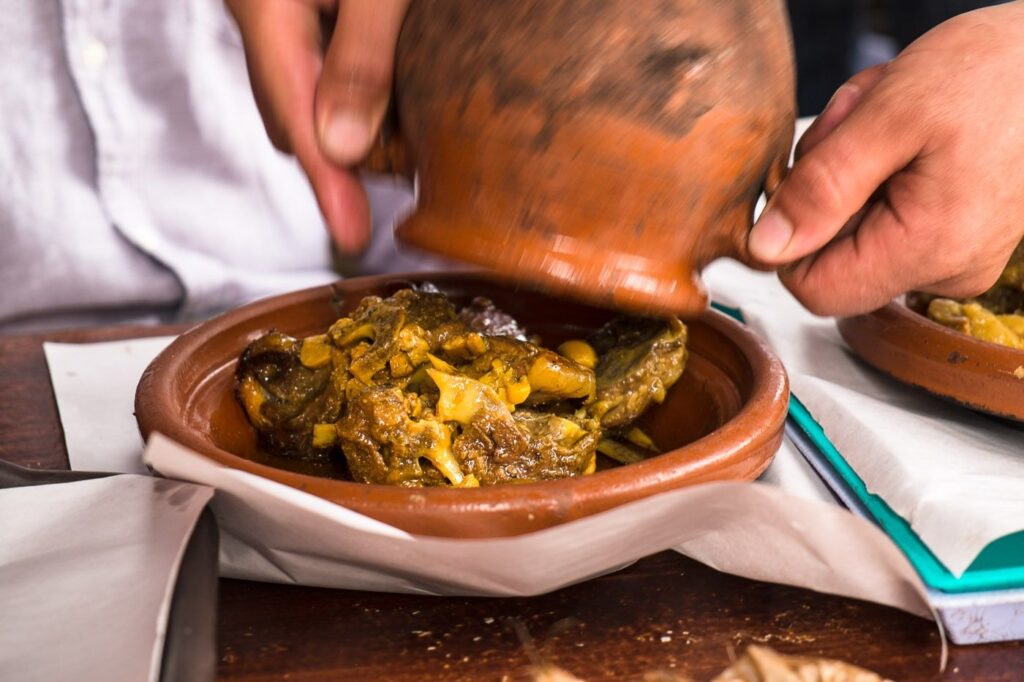
When you visit Marrakech, you should try Tangia. It’s a slow-cooked dish that shows off the local food culture. Tangia isn’t just any meal; it’s a mix of flavors and spices that turn simple ingredients into something amazing. The dish is cooked in a special clay pot, also called a tangia. To cook it, they seal the pot with paper and string and then slow-cook it in hot ashes from a wood fire. This method makes the meat, usually lamb, very tender. It soaks up the flavors of garlic, saffron, preserved lemon, and cumin.
There are different versions of Tangia to suit all tastes. Some cooks add sweet fruits like dates or apricots to balance the savory meat. While you can find Tangia made with beef or chicken, lamb is the most popular because it stays juicy and flavorful even after cooking for a long time. Each version has its special touch, inviting you to explore Marrakech’s food scene, one delicious bite at a time.
2. The Delight of Harira Soup
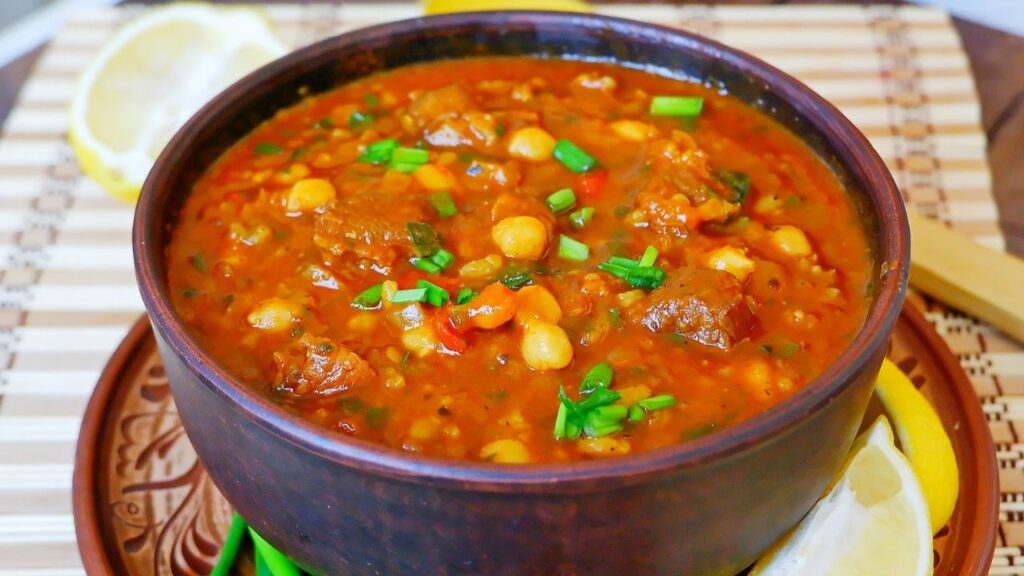
Harira soup is a popular dish in Morocco, known for its warm and inviting flavors. It combines tomatoes, lentils, chickpeas, and a variety of spices that make each spoonful exciting and delicious. This soup isn’t just food; it’s a way to experience Moroccan culture and hospitality. Each bite is like a lesson in the traditions of Morocco, making it a must-try for anyone visiting the country.
Here are some key points about Harira soup:
- Ingredients: Harira is made with simple, wholesome ingredients like tomatoes, lentils, chickpeas, onions, and rice. Spices such as cinnamon, ginger, and turmeric add a special kick that brings the soup to life.
- How it’s made: The soup is cooked slowly, allowing all the flavors to blend beautifully. This slow cooking makes the soup comforting and deeply satisfying.
- Why it’s special: Harira is more than just a meal; it’s part of Moroccan traditions, especially during Ramadan, the Muslim month of fasting. People often eat Harira to break their fast, making it a symbol of celebration and community.
When you try Harira, you’ll notice how the ingredients come together perfectly, thanks to the careful way it’s made. It’s a great choice whether you’re relaxing after a day of sightseeing or starting a festive night. Don’t miss out on this beloved Moroccan treat!
3. Maakouda: Potato Pancake Perfection
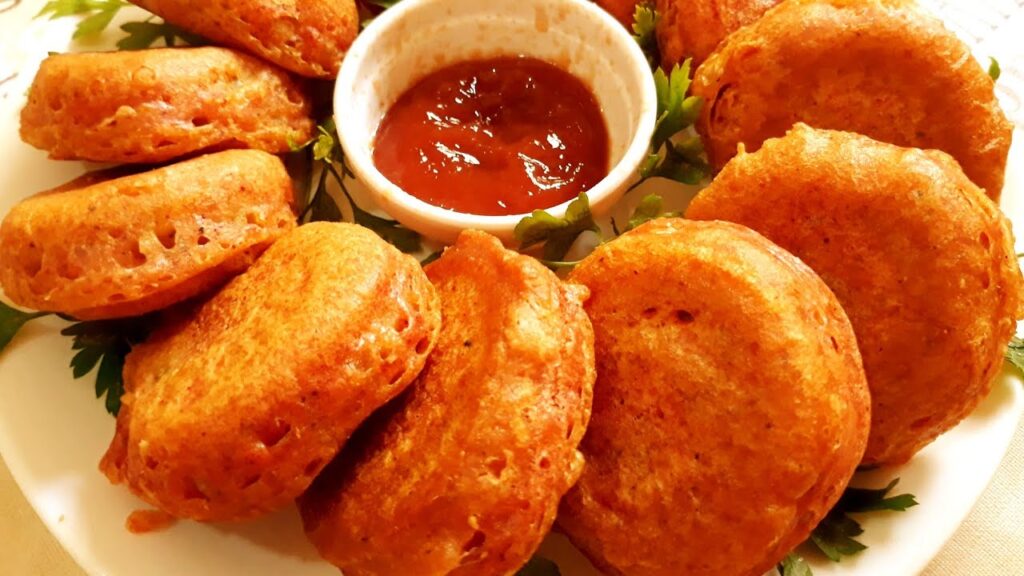
After enjoying the deep flavors of Harira soup, make sure to try Maakouda, a delicious Moroccan street food made up of crispy potato pancakes. These golden treats are a key part of Moroccan food, blending easy recipes with a pop of taste that makes them a must-try. As you explore lively markets, you’ll often see Maakouda frying on hot griddles, filling the air with a tempting smell that blends with the colorful market atmosphere.
Maakouda is made by smashing boiled potatoes and adding spices like cumin, paprika, and sometimes a little garlic. This mix is then shaped into small, flat cakes and fried until the outside is perfectly crunchy. The way they cook Maakouda ensures it has a crispy shell with a soft, tasty middle.
You can enjoy Maakouda in different ways. Some vendors put these pancakes into a sandwich with fresh herbs and a spicy sauce, making a filling meal. Others offer them alone as a quick snack, letting you appreciate the mild flavors and textures. With different ways to try them, Maakouda suits every kind of taste.
Dive into the variety of Maakouda options in Morocco, and let each bite pull you further into the exciting world of street foods.
4. Savoring Moroccan Sardines
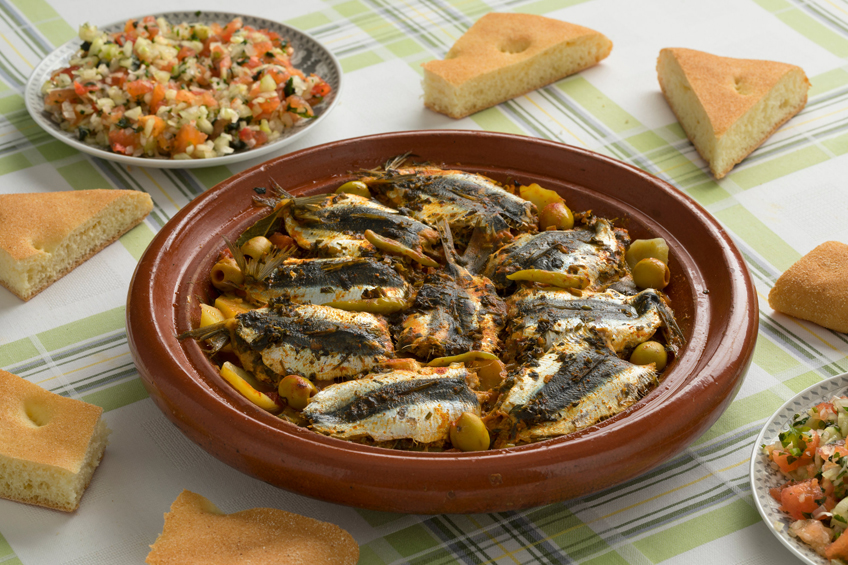
Dive into the delicious world of Moroccan sardines, a favorite among both locals and visitors. These small fish are a common sight in markets and food stalls and offer not just great taste but also impressive health benefits.
In Morocco, chefs have mastered the art of cooking sardines. You can enjoy these fish grilled over an open fire, adding a smoky flavor, or fried until they’re nice and crispy, often served with a splash of lemon. Some chefs stuff the sardines with a spicy paste called chermoula and bake them until they’re just right. Each cooking method highlights the sardine’s natural taste while keeping it tender.
Here are some quick facts about Moroccan sardines:
- Full of Omega-3 Fatty Acids: These are good for your heart and brain.
- Packed with Protein: Helps with energy and fixing muscles.
- Important in Moroccan Culture: They’re a big part of local food traditions.
Trying Moroccan sardines is more than just eating; it’s about experiencing a tradition that has been passed down through many generations. It’s also a chance to try new flavors and dishes. So, when you’re traveling, be sure to taste this delightful treat that’s both yummy and healthy.
5. Bissara: Fava Bean Dip
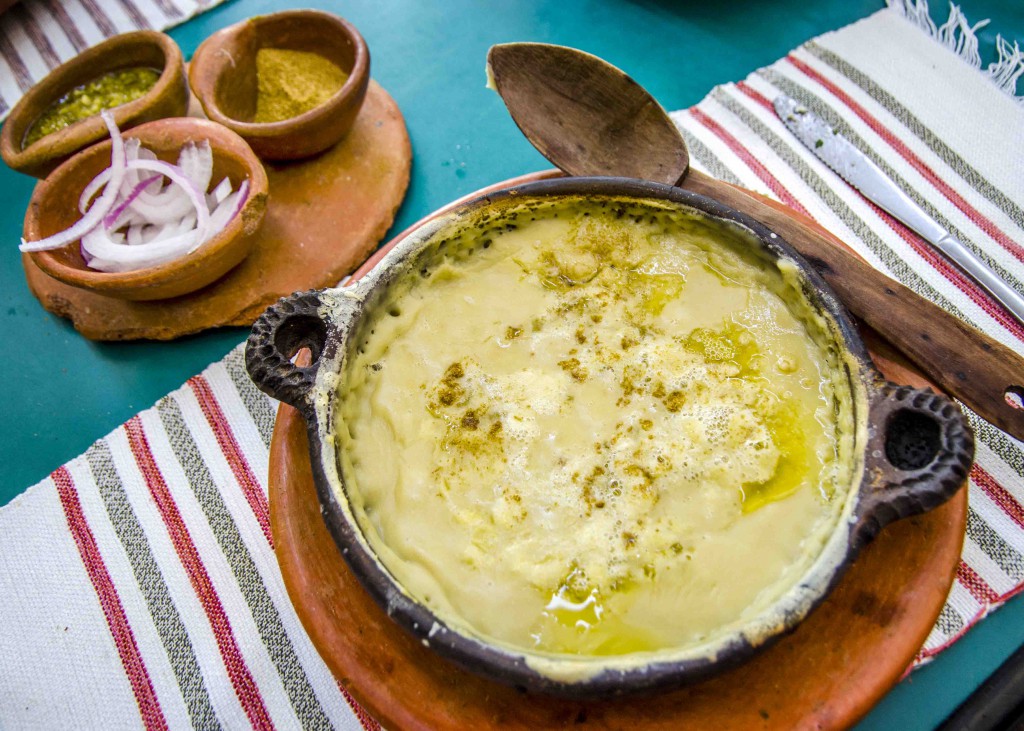
Discover the warm, comforting Bissara, a traditional Moroccan fava bean dip that’s perfect for travelers seeking a taste of local cuisine. This simple, creamy dish is a favorite during the chilly months, but it’s delightful any time of the year. Bissara is made mostly from fava beans, making it a great source of protein and fiber – ideal for keeping you energized as you explore vibrant markets and peaceful mountain trails.
The process of making Bissara is straightforward. Start by soaking the fava beans overnight to soften them, which makes them easier to cook. Once they’re soft, blend them with garlic, olive oil, lemon juice, and familiar spices like cumin and paprika. This mix is then cooked until it becomes thick and smooth, perfect for dipping.
Enjoy Bissara hot, topped with a little extra olive oil and a dash of cumin. It’s excellent as a hearty breakfast or a cozy snack. Remember to have some fresh, crusty bread on hand to dip into the Bissara and capture every flavorful scoop.
When you eat Bissara, you’re not just enjoying a simple dish; you’re diving into Moroccan culture. This dip isn’t just food; it’s an invitation to explore and experience new adventures. Let Bissara be a part of your travel journey, offering a taste of Morocco that inspires curiosity and excitement.
6. The Sweetness of Sfenj
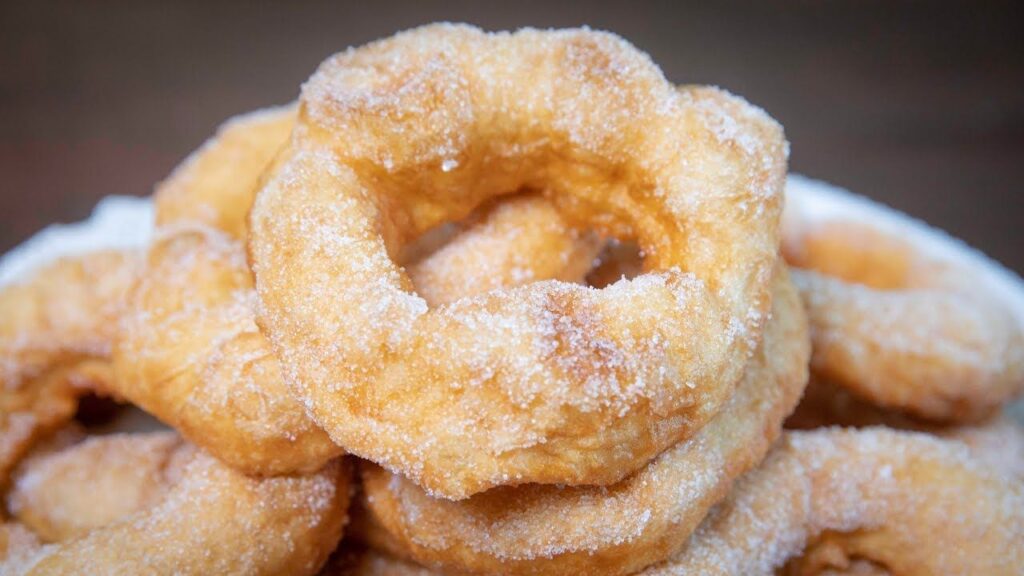
When you’re enjoying the deep flavors of Bissara, make sure to try Sfenj too. Sfenj is one of the most popular street foods in Morocco known for its sweetness. This traditional donut is made with different types of local flour, offering a taste of Morocco’s unique pastry styles. Eating Sfenj is more than just having a snack; it’s a way to experience the rich food culture of Morocco.
As you walk through lively markets, you’ll easily notice the smell of Sfenj frying in big, open pans. The way vendors fry the dough makes the outside crispy and the inside soft and airy. Each bite is a lovely mix of crunchy and light, and it’s even better when dipped in sugar or honey. Here are a few reasons why Sfenj is a must-try:
- Local Flour Types: Different areas might use different flour mixes, making each Sfenj special.
- Artisanal Techniques: You can watch vendors skillfully make and fry the dough right in front of you.
- Versatile Enjoyment: It’s great with morning coffee or as an afternoon treat with mint tea.
Treat yourself to this simple but delightful sweet, and let the tastes of street foods in Morocco lead you on a memorable adventure. Enjoy the freedom to discover new flavors.
7. Brochettes: Grilled Meats Galore
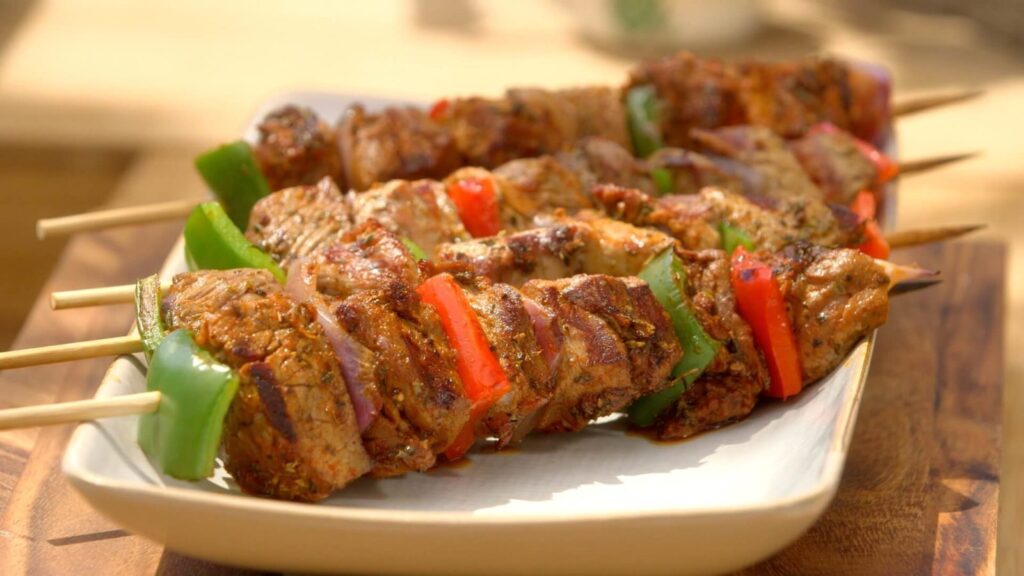
Morocco’s lively street markets are a feast for the senses, especially when it comes to their famous brochettes – skewers of grilled meats that are a true taste of local tradition. As you explore the colorful streets, the delicious smell of these grilled treats fills the air. Eating brochettes is more than just a meal; it’s a way to experience Moroccan culture, crafted with care and love. You can find skewers with juicy beef, tasty chicken, and more, each showing off the flavors that make Moroccan food special.
The amazing taste of brochettes comes from the way the meat is prepared before grilling. The meat is soaked in a mix of spices like cumin, coriander, and paprika, along with olive oil and lemon juice. This mix helps the spices soak into the meat, making it tender and full of flavor.
It’s also important how the meat is cooked. The skewers are cooked over an open fire, which gives the meat a smoky flavor that everyone loves. The cooks make sure to turn the skewers often so every piece is cooked just right and stays juicy. This careful cooking makes sure every bite is delicious and packed with taste.
When you visit Morocco, trying brochettes is a must. It’s not only a chance to enjoy a tasty meal but also to dive into the rich culture and traditions of this vibrant country.
8. The Charm of Chebakia
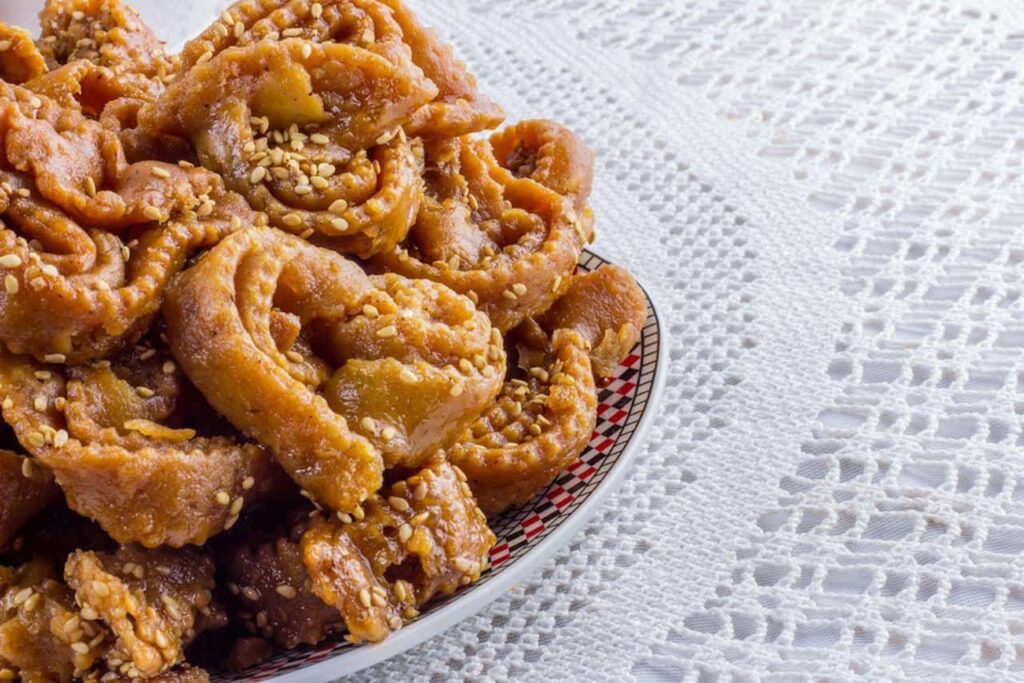
Experience the delight of Chebakia, a delightful Moroccan dessert that blends sesame, honey, and anise into a sweet treat. This special pastry is more than just a way to satisfy your craving for something sweet. It also carries with it a rich history that connects deeply to Moroccan traditions. Chebakia has been a part of celebrations and religious gatherings for many years, symbolizing happiness and good fortune.
When you learn about how Chebakia is served, you begin to understand its important role in Moroccan culture. It is most commonly enjoyed during Ramadan at iftar, the meal that breaks the day’s fast. Enjoying Chebakia is not only about treating yourself but also about being part of age-old traditions that unite families and communities.
Here are a few reasons why Chebakia is so special:
- Carefully Made: Each piece is made by hand, fried until crisp, then dipped in warm honey and topped with sesame seeds.
- Unique Taste: Chebakia combines flavors like anise, cinnamon, and saffron, creating a distinctive and delicious taste.
- Great with Tea: Chebakia goes perfectly with mint tea, complementing the tea’s freshness with its sweet and sticky feel.
Whether you’re exploring the lively markets of Marrakech or relaxing at home, the charm of Chebakia is unmistakable. This pastry shows how taste and tradition can come together in one delightful bite.
9. Must-Taste Msemen Flatbread
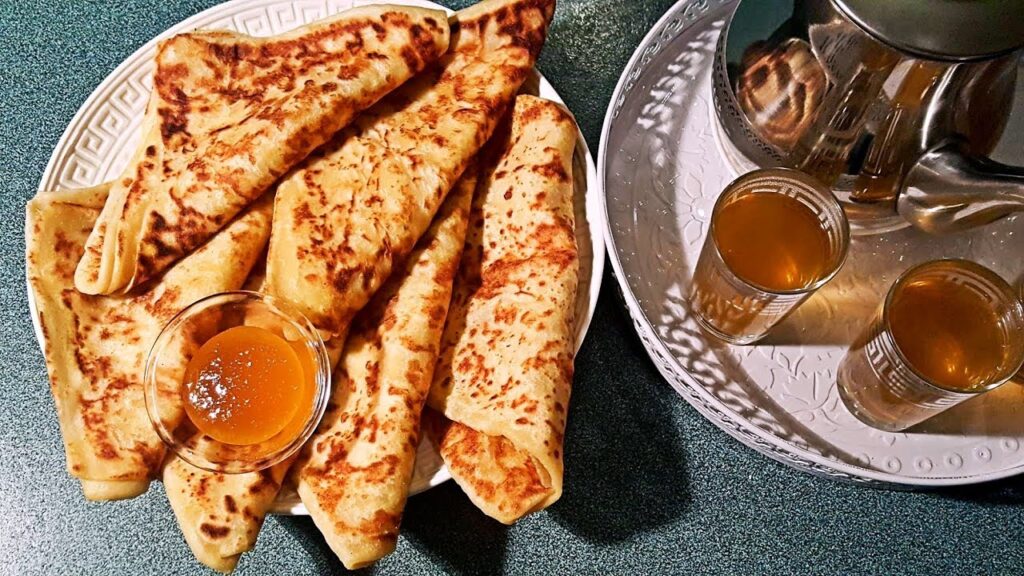
When you’re walking through the streets of Morocco, make sure to try a special flatbread called Msemen. This tasty bread is an important part of Moroccan food and culture. Msemen is a square bread made with just a few simple ingredients like flour, water, and salt. What’s amazing is how this simple bread can be changed by adding different fillings like sweet honey or fresh herbs.
As you explore, you’ll see how Msemen is made. Local vendors take great care in preparing it by kneading and folding the dough with butter and oil. This process gives the bread its unique flaky layers. Then, they cook it on a hot griddle until it’s crispy on the outside but still soft inside. Each vendor has their way of making Msemen, so each one you try might taste a little different.
Some vendors also add spices like cumin or aniseed to the Msemen, giving it extra flavors that are enjoyable. You can choose how you like your Msemen – plain, with butter, or filled with different ingredients. This means that everyone can find a way to enjoy this delicious Moroccan bread in their favorite style.
10. Kefta: Minced Meat Marvel
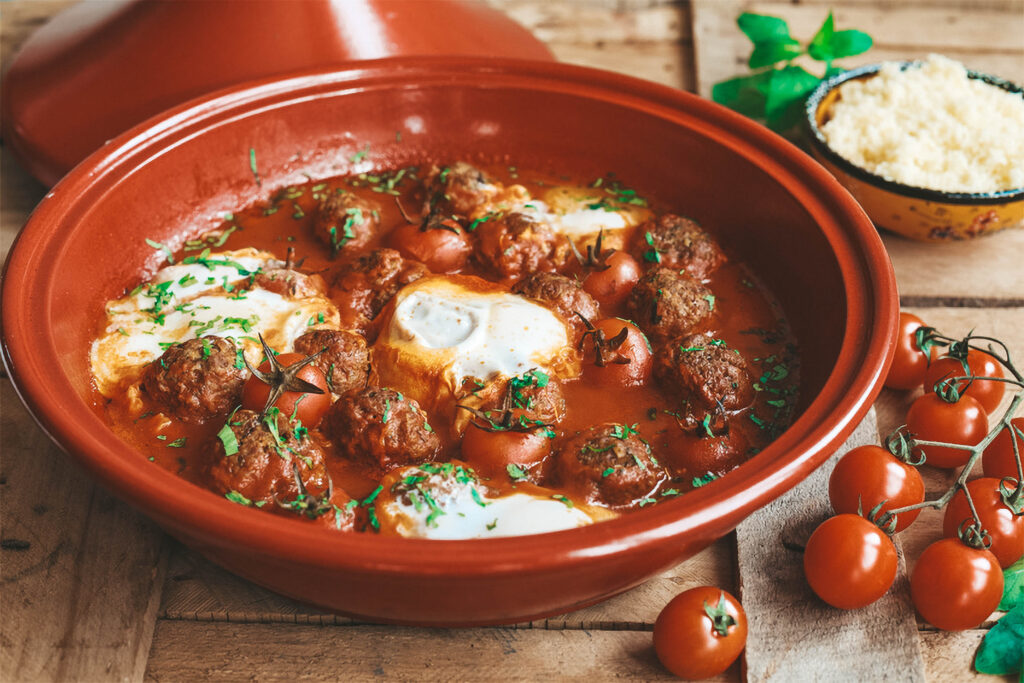
When you’re exploring the street foods in Morocco, be sure to try Kefta, a delicious Moroccan dish made from minced meat mixed with spices. This dish isn’t just about mixing meat and spices; it’s a true craft that involves careful seasoning and cooking. The result? Kefta offers a rich flavor and soft texture that makes it a standout dish.
Here’s why Kefta is special:
- Expert Seasoning: Every cook adds a mix of spices like cumin, paprika, coriander, and mint. These spices turn the simple ground meat into something truly amazing.
- Flexible Cooking Styles: Kefta can be grilled, cooked in a tangy tomato sauce, or tucked into a crisp sandwich. No matter how it’s cooked, it’s always tasty.
- A Part of Culture: Kefta is more than just a meal; it’s a key part of Moroccan culture. It’s often served at social events and is a must-try for any traveler looking to experience local traditions.
As you walk through the busy markets, follow your nose to the nearest Kefta vendor. Trying this dish is not just about eating; it’s about experiencing the rich flavors and traditions of Morocco. Make the most of your food adventure and enjoy every flavorful bite of Kefta!
Book Your Food Tour in Morocco
Are you ready to explore the incredible food of Morocco and make your taste buds dance? Today is the day to book your amazing food tour!
Conclusion
Discover the top 10 street foods you must try in Morocco, each offering a unique glimpse into the country’s rich food culture. From the tender, slow-cooked tangia in Marrakech to the sweet and complex flavors of Chebakia, your taste buds are in for a journey through a world of delicious tastes. When visiting Morocco, make sure to try these amazing dishes. They are not just food; they celebrate Moroccan traditions and hospitality. Enjoy discovering these flavors, one bite at a time!

